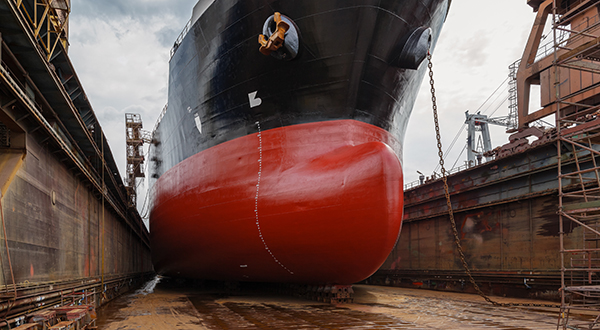search the site
OCIMF launches Ship Security – Hull Vulnerability Study

Image hereabove is being used for illustration purposes only
OCIMF launches Ship Security – Hull Vulnerability Study
Recently, OCIMF members highlighted the fact that the attacks against vessels from missiles, crafts carrying Improvised Explosive Devices (IEDs) and hand-held Anti-Tank Guided Weapons (ATGWs) have been severely increased. According to recent incidents, the stern of the hull is the most targeted area, especially on tankers. For that reason, OCIMF collaborated with defence company QinetiQ for a study on tanker hull vulnerability. This information paper focuses on the results of the study in relation to the protection of crew and vessels. The results provide mitigating measures that can be applied to both existing and new build vessels.
Safety | 05/03/19
Mainly, in order to conduct the survey, the partners provided a computer-based simulation study. The simulations were created by QinetiQ’s Survive tool to investigate the vulnerability of a laden Aframax-size tanker’s hull with the crew at a heightened state of readiness. This type of vessel was chosen for the study because its hull construction is a common tanker form.
The aim of the study was to determine, following attacks by Anti-Ship Missiles (ASMs), Water-Borne IEDs (WBIEDs) and ATGWs:
- The possibility of injury to seafarers.
- The effect on crew evacuation routes.
- The scale of damage.
The study used computer-based simulation to assess the vulnerability of an Aframax-size tanker to a range of credible threats: a representative ASM, a WBIED and an anti-tank missile.
OCIMF’s study concluded to the following results:
The WBIED modelled is capable of:
- Inflicting blast-related fatalities and injuries.
- Causing extensive damage to the hull and superstructure plates due to blast and shock, resulting in flooding of the machinery spaces.
- Blast and shock damage to the propulsion and steering system and to the electrical power system.
- Damaging escape routes and lifesaving appliances due to blast.
The effects of the ASM and ATGW modelled are localised in the impact area:
- No flooding is predicted.
- Damage to the vessel’s critical systems is unlikely.
- Escape routes and lifeboats-rafts may be susceptible to damage.
- Crew injuries are likely to happen, and if a weapon hits an occupied space, as the bridge, multiple serious injuries and fatalities can occur.
When operating in areas where threats of ASMs, ATGWs and WBIEDs have been identified, the study highlights that:
- Mustering the crew at a point other than the citadel (if in the engine room) and providing ballistic protection at this alternative point.
- Securing or removing potentially hazardous material and equipment from crew muster points.
- Providing the crew with additional or specialist firefighting equipment and training.
- Ensuring the crew are familiar with all escape routes.
- Providing body armour and ear defenders.
- Adding structural armouring to high-value exposed locations, such as the bridge.
- Providing additional protection to critical equipment and escape route doors against blast and shock damage against weapon effects.
- Enhancing firefighting and blast suppression systems.
For newbuild vessels, this study addresses:
- Duplicating critical systems as a consideration for future design, including the vessel’s main engine and electrical power generators. This is similar to the duplication of navigational tools and systems that is often already in place on vessels.
- Installing Side Protection Systems (SPSs) to limit hull damage from IED explosions. Future design is influenced by many factors, and this possibility is included as an innovative research and development idea for vessel designers to explore for feasibility and cost-risk assessment.
For more information, click on the PDF herebelow

Source: SAFETY4SEA

















